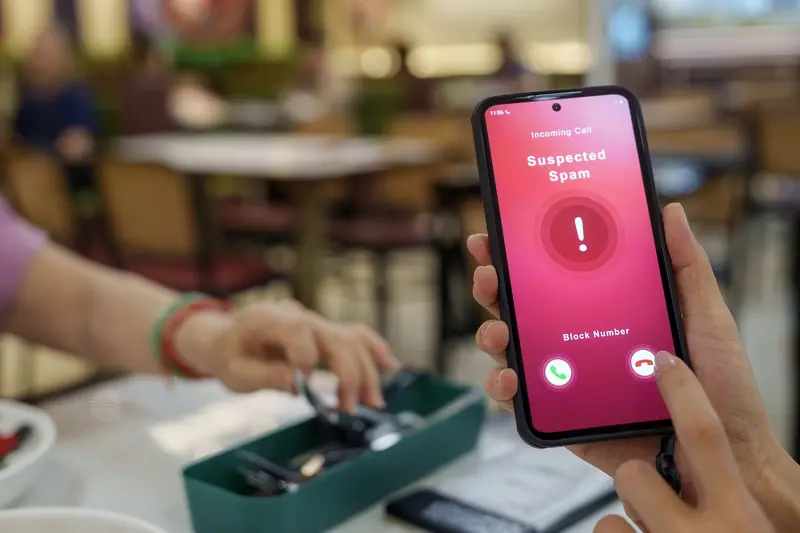How To Develop A Secure Mobile Banking App
In today's digital-first world, developing a secure mobile banking app isn't just about creating a sleek interface – it's about building trust. As more Brits manage their finances through smartphones (a whopping 86% of us in 2024), the need for robust security has never been more critical.
Perhaps you're a financial institution looking to develop your first mobile banking app, or maybe you're planning to upgrade your existing solution. Either way, security concerns might be keeping you up at night – and rightfully so. After all, you're handling people's hard-earned money and sensitive data.
Security in mobile banking isn't a feature – it's the foundation upon which everything else is built.
Why This Guide Matters
Think of building a secure banking app like constructing a modern fortress. You need robust walls (encryption), sophisticated locks (authentication), and vigilant guards (security protocols). But unlike medieval castles, today's security challenges evolve at lightning speed.
Throughout this guide, we'll walk you through every crucial aspect of developing a secure mobile banking app, from basic security principles to complex regulatory requirements. We'll share insights gained from eight years of creating secure financial applications, without getting lost in technical jargon – because we believe security should be understood by everyone, not just IT experts.
Whether you're a startup challenger bank or an established financial institution, this guide will help you navigate the complex landscape of mobile banking security. So, let's begin this journey together, ensuring your future app not only meets but exceeds the security expectations of both regulators and users.
Understanding Mobile Banking Security Basics
When it comes to mobile banking security, think of it as building a house. Just as you wouldn't start construction without a solid foundation, you can't develop a banking app without understanding the fundamental security principles that keep users' money and data safe.
The Three Pillars of Mobile Banking Security
In our eight years of developing secure banking apps, we've learned that security boils down to three essential elements - rather like a three-legged stool. Remove any one leg, and the whole thing topples over. These pillars work together to create what we call the 'security triangle':
- Confidentiality: Ensuring that only authorised users can access sensitive information
- Integrity: Guaranteeing that data hasn't been tampered with or altered
- Availability: Making sure the service is accessible when users need it
Common Security Threats
Picture your mobile banking app as a digital fortress. Just as medieval castles faced different types of attacks, modern banking apps must defend against various threats. Today's cybercriminals are increasingly sophisticated - rather like modern-day digital pirates - using techniques such as man-in-the-middle attacks, malware, and phishing attempts.
The good news is that understanding these basics helps shape a robust security strategy. It's a bit like learning the rules of chess before playing your first game - you need to know how all the pieces move before you can develop a winning strategy. In the following chapters, we'll explore how to implement these fundamentals into your banking app's architecture.
Essential Security Features and Standards
When it comes to mobile banking security, we know it can feel like navigating through a maze of technical requirements. After helping numerous financial institutions develop their mobile apps, we've learned that getting the security foundations right from the start is absolutely crucial.
Core Security Standards
Think of security standards as your banking app's protective shield. Just as we wouldn't dream of keeping our savings under the mattress, your banking app needs robust protection. The essential standards include PCI DSS compliance for payment handling, OAuth 2.0 for secure authorisation, and SSL/TLS encryption for data transmission - similar to how a secure letter needs both a sealed envelope and trusted courier.
Must-Have Security Features
Every secure banking app should include multi-factor authentication (combining something you know, have, and are), certificate pinning to prevent man-in-the-middle attacks, and robust API security. We've found that implementing biometric authentication, such as fingerprint or face recognition, significantly enhances security whilst keeping things user-friendly - much like how modern passport gates make security checks both safer and smoother.
Remember, security features shouldn't feel like obstacles to your users. They should work seamlessly in the background, like a well-trained security guard who's present but unobtrusive. The goal is to protect without frustrating your customers.
When implementing security features, always include a fallback authentication method. We've seen countless situations where users can't access their accounts because their only authentication method (like fingerprint scanning) stops working on their device.
User Authentication and Access Control
Think about the last time you logged into your mobile banking app. That familiar feeling of wanting quick access while also needing to know your money is safe. It's a delicate balance that keeps many financial institutions awake at night.
The Foundation of Trust
Authentication is like having a careful bouncer at an exclusive club - it needs to keep the wrong people out while smoothly welcoming the right ones in. In mobile banking, we've moved far beyond simple passwords. Today's gold standard is multi-factor authentication (MFA), which combines something you know (like a PIN), something you have (such as your mobile device), and something you are (think fingerprints or facial recognition).
Smart Access Control
Remember that frustrating moment when you tried to make a large payment and your banking app asked for additional verification? That's intelligent access control at work. We implement adaptive authentication, which adjusts security levels based on various factors - like whether you're using your regular device or trying to access from an unusual location.
In our experience developing banking apps for UK institutions, we've found that biometric authentication has become increasingly popular. It's not just convenient - it's also remarkably secure when implemented properly. Think of your fingerprint as your personal signature that can't be copied or forgotten (unlike that PIN you wrote on a sticky note).
The key is finding the sweet spot between security and user experience. Too many security steps, and users get frustrated. Too few, and you're leaving the door open to potential threats. It's rather like making the perfect cup of tea - getting the balance just right makes all the difference.
Data Protection and Encryption
When it comes to mobile banking, protecting sensitive financial data is like safeguarding the crown jewels. As developers with years of experience in the fintech sector, we understand that your customers trust you with their most valuable information – and that's not something to be taken lightly.
Understanding Data Protection Layers
Think of data protection like a traditional British tea set: you don't just wrap everything in one layer of bubble wrap and hope for the best. Instead, you need multiple layers of protection working together. In mobile banking apps, this means implementing end-to-end encryption for all data, both at rest and in transit.
Security isn't just about protecting data - it's about maintaining trust and giving customers peace of mind every time they open their banking app
Encryption Standards and Implementation
We always recommend using the strongest available encryption standards, such as AES-256 for data at rest and TLS 1.3 for data in transit. It's a bit like using a sophisticated Yale lock instead of a simple latch – the extra security is worth every penny. Additionally, we implement certificate pinning to prevent man-in-the-middle attacks, something that's become increasingly important in our interconnected world.
Remember those headlines about banking data breaches? They're exactly what we're working to prevent. By incorporating secure key management systems and following the UK's Data Protection Act 2018 requirements, we ensure that even if someone manages to intercept the data, it remains completely unusable to them. It's rather like sending a coded message where only the intended recipient has the key to unlock it.
Secure Payment Processing
When it comes to mobile banking, payment processing is where the rubber meets the road. It's the moment your users trust your app with their hard-earned money, and we know that's no small matter. Just imagine checking your account balance after a transaction, only to discover something's gone wrong – it's the stuff of nightmares, isn't it?
That's why implementing robust payment processing security isn't just a technical requirement – it's a sacred trust. In our experience at Glance, we've found that a multi-layered approach works best, much like the security measures at the Bank of England (though perhaps with fewer armed guards!).
Essential Payment Security Measures
- PCI DSS compliance for all payment processing
- Real-time fraud detection systems
- Secure payment gateways with end-to-end encryption
- Transaction signing and verification
- Payment tokenisation to protect card details
- Multi-factor authentication for large transactions
Remember when contactless payments seemed like science fiction? Now they're everywhere. But with every new payment method comes new security challenges. That's why we recommend implementing a payment processing system that's both secure and flexible enough to adapt to emerging technologies.
One often overlooked aspect is transaction monitoring. Think of it as having a vigilant friend watching over your shoulder – but in this case, it's sophisticated algorithms detecting unusual patterns. If someone suddenly tries to send £10,000 to an account in the middle of the night when they usually only make small daytime transactions, the system should raise a red flag.
Testing and Quality Assurance
When it comes to mobile banking apps, testing isn't just a box-ticking exercise – it's an absolute necessity. Think about it: you're handling people's hard-earned money, and even a tiny glitch could cause significant stress and worry for your users.
Security Testing Essentials
At Glance, we've learned that comprehensive security testing needs to follow a systematic approach. This typically includes penetration testing (or 'pen testing' as we like to call it), vulnerability assessments, and stress testing. Imagine your app as a fortress – we need to check every brick, window, and door to ensure there are no weak points that could be exploited.
User Experience Testing
Security testing goes hand in hand with usability testing. We've seen many banking apps that are super secure but so complicated that users struggle to perform basic tasks. The key is finding the sweet spot between robust security and user-friendly design – rather like having a state-of-the-art home security system that doesn't require a PhD to operate!
Quality assurance should cover various real-world scenarios, from checking how the app behaves when there's poor internet connectivity (we've all been there on the London Underground!) to ensuring it works seamlessly across different devices and operating systems.
Always include real banking customers in your testing phase. Their feedback is invaluable, and they'll often uncover usage patterns that developers might not have considered. We've found that involving at least 20 diverse users provides the most comprehensive feedback.
Remember, testing isn't a one-time affair – it's an ongoing process that continues well after your app launches. Regular security audits and user feedback sessions help ensure your app remains both secure and user-friendly as technology evolves.
Meeting UK Financial Regulations
When developing a mobile banking app in the UK, navigating the regulatory landscape can feel like trying to complete a particularly tricky puzzle. We've guided numerous financial institutions through this process, and we understand how overwhelming it can seem at first.
Key Regulatory Bodies and Requirements
Your mobile banking app must comply with regulations from several UK authorities, primarily the Financial Conduct Authority (FCA) and the Prudential Regulation Authority (PRA). Think of these organisations as the guardians of the UK's financial services - they're there to protect both your business and your customers.
The most crucial regulations you'll need to consider include the Payment Services Regulations (PSR), the General Data Protection Regulation (GDPR), and the Financial Services and Markets Act. It's rather like following a recipe - miss one ingredient, and the whole dish might not turn out right.
Practical Compliance Steps
From our experience working with UK banks, we've found that successful compliance often comes down to three key areas: strong customer authentication (SCA), transparent data handling processes, and robust incident reporting procedures. Remember how contactless payments were initially capped at £30, and then gradually increased to £100? That's a perfect example of how regulations evolve to balance security with user convenience.
We recommend maintaining detailed documentation of your compliance measures - rather like keeping a diary of your app's regulatory journey. This should include regular assessments of your app's security features, user authentication methods, and data protection measures. Think of it as your app's MOT certificate - it needs regular updates to ensure everything's running as it should.
Ongoing Security Maintenance
Just like a well-maintained garden needs constant attention to flourish, your mobile banking app requires continuous security oversight to stay protected. At Glance, we've learned that many organisations underestimate the importance of ongoing maintenance, often focusing solely on the initial security setup.
The Security Maintenance Cycle
Think of security maintenance as a never-ending cycle, much like keeping your home secure. You wouldn't install a burglar alarm and never check it again, would you? The same principle applies to mobile banking security. Regular updates, patch management, and security assessments are crucial to protect against emerging threats.
Security isn't a one-time achievement - it's a continuous journey that requires vigilance, adaptability, and proactive management
Proactive vs Reactive Maintenance
We've noticed that the most successful banking apps take a proactive approach to security maintenance. This means regularly updating encryption protocols, monitoring for unusual activity patterns, and conducting periodic security audits. It's rather like having regular health check-ups instead of waiting until you're ill to see a doctor.
In the UK financial sector, we've observed that apps performing monthly security assessments and weekly vulnerability scans tend to maintain better security postures. Remember to keep detailed maintenance logs - they're not just good practice, they're often required by the FCA and other regulatory bodies.
A practical tip we share with all our clients: set up automated security monitoring systems. They're like having a 24/7 security guard who never takes a tea break. This continuous monitoring helps identify potential threats before they become serious problems, saving both time and resources in the long run.
Future-Proofing Your Banking App
Building a secure banking app isn't just about meeting today's requirements - it's about preparing for tomorrow's challenges. Think of it like constructing a house; you wouldn't want to build one that only meets current building regulations but might become outdated in a few years.
Embracing Emerging Technologies
The financial technology landscape is evolving rapidly, much like how mobile phones have transformed from simple calling devices to powerful computers in our pockets. To future-proof your banking app, you'll need to consider incorporating emerging technologies like blockchain, artificial intelligence for fraud detection, and quantum-resistant cryptography. These aren't just buzzwords - they're becoming essential tools in the banking security arsenal.
Flexible Architecture Design
One of the most crucial aspects of future-proofing is building your app with a flexible architecture. This means designing your system to be modular, making it easier to update individual components without overhauling the entire application. It's similar to having a wardrobe with mix-and-match pieces rather than a single, inflexible outfit.
We've seen countless banking apps struggle with updates because they weren't built with flexibility in mind. That's why we recommend implementing containerisation, microservices architecture, and API-first design principles. These approaches make it significantly easier to integrate new security features and adapt to changing regulations in the UK financial sector.
Remember, future-proofing isn't about predicting the future perfectly - it's about building an app that can adapt to whatever the future brings. Just as we couldn't have predicted all of today's banking needs a decade ago, we need to build systems that can evolve with tomorrow's requirements.
Conclusion
Building a secure mobile banking app is like constructing a digital fortress – it requires careful planning, expert execution, and unwavering attention to detail. Throughout this guide, we've walked you through the essential elements that make up a robust, secure banking application, from the foundational security principles to future-proofing strategies.
We understand that the prospect of developing a secure banking app might feel overwhelming. With cybersecurity threats evolving daily and regulatory requirements becoming increasingly complex, it's natural to feel a bit anxious about getting everything right. It's rather like trying to solve a Rubik's cube that keeps changing colours – challenging, but certainly not impossible with the right approach.
Remember that security isn't a one-time achievement but an ongoing journey. Just as you wouldn't install a home security system and never check it again, your banking app requires constant monitoring, updates, and improvements to stay ahead of potential threats. The UK's financial sector is particularly stringent about security standards, and rightfully so – we're dealing with people's hard-earned money and sensitive data.
Whether you're a fintech startup or an established financial institution, the key to success lies in striking the perfect balance between robust security and user experience. By following the principles and practices outlined in this guide, you're well-equipped to create a banking app that not only meets today's security challenges but is also prepared for tomorrow's threats. After all, in the world of mobile banking, trust is the currency that matters most.
Share this
Subscribe To Our Learning Centre
You May Also Like
These Related Guides

How Do You Handle Fraud Prevention in Financial Apps?

How Do You Handle PCI Compliance in Fintech Apps?



